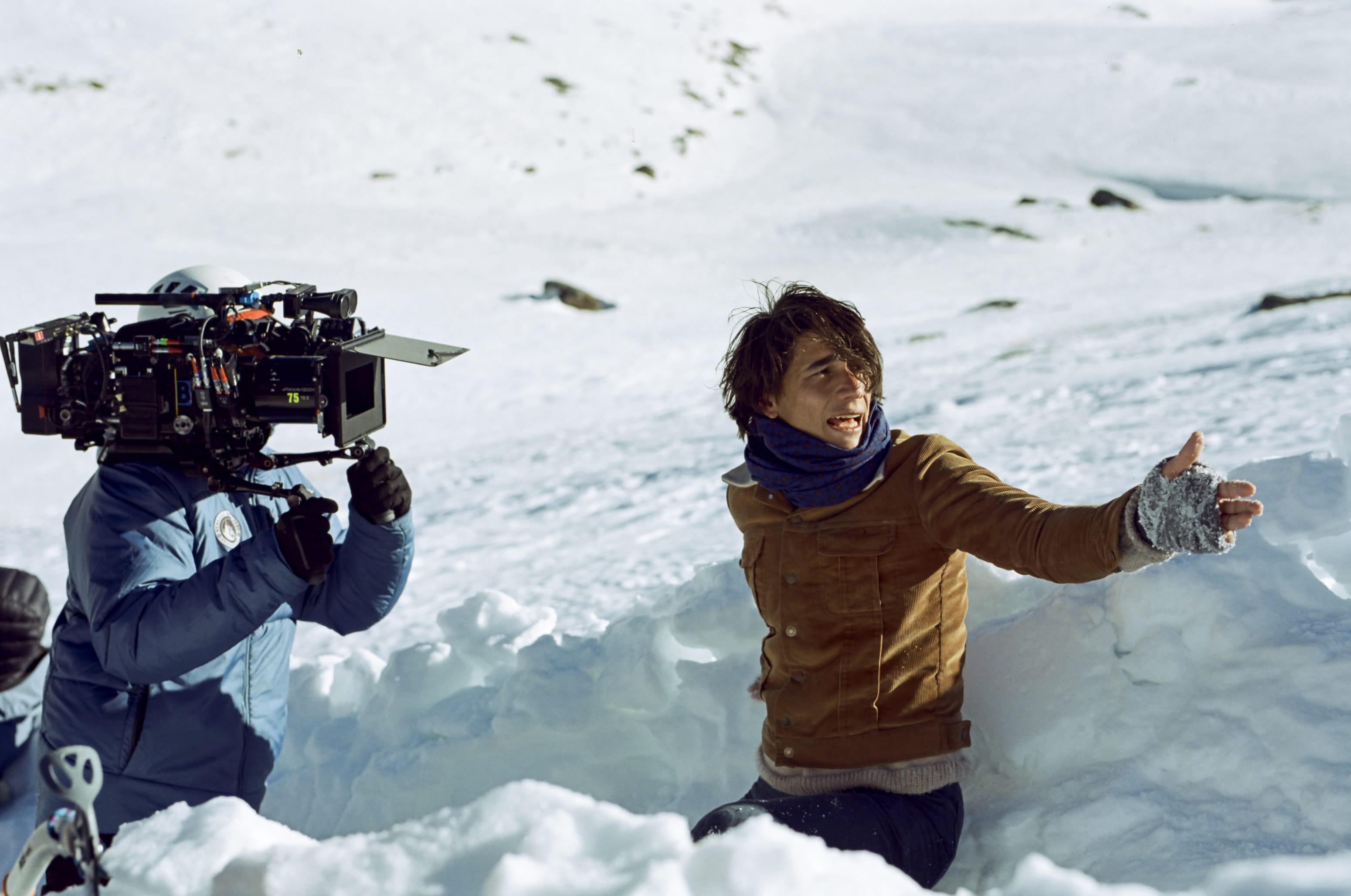"Truckloads of real snow": The VFX and SFX that made 'Society of the Snow' real
VFX Supervisor Félix Bergés and special effects supervisor Pau Costa reveal how the harrowing film came to life
By Gabriella Geisinger 7 Feb 2024

Nominated for this year’s Best International Feature Film Oscar, JA Bayona’s Society of the Snow tells the true story of the 1972 Uruguayan rugby team whose plane crashed in the Argentinian Andes. Before filming, Bayona, cinematographer Pedro Luque, and visual effects supervisor Laura Pedro visited the crash sit in the so-called Valley of Tears.
Though some photography took place in the inhospitable landscape of the Andes, Society of the Snow necessitated a shoot location of Spain’s Sierra Nevada mountains. It was then up to Pedro, her co-VFX supervisor Félix Bergés and special effects supervisor Pau Costa to make viewers believe the 25 strong cast were truly in the Valley of Tears.
"When [the survivors] go out on their first and second expedition up the mountain, you see it as a journey in one place. We have actually shot that in 15 different places,” Bergés says. “We have to look for a special place for each shoot. What has snow when you need ice, the level of snow also - because sometimes you'd get [to a filming location] and it wouldn't snow, there would be only ice. And then you go to another, and it wouldn't be good. And then you go to another location and it was finally good enough That was very complicated.”
While Sierra Nevada offered a similar layout to the real crash site, an amphitheatre with mountains soaring up behind, the sheer height and scope of the Andes’ mountains was far greater. To compensate for this, Bergés built digital set extensions using a previsualisation tool built in Unreal Engine.
“The most important thing,” Bergés says, to create a seamless transition from multiple shoot locations, is “to have a clear idea of the valley of the tears.” Within a few months it becomes second nature to look at a spot in another location and see where it should match in the Sierra Nevada, or the set extension, Bergés explains. “It’s our it's our craft.”
The realism of the mountains was in part achieved through a system of mobile LED screens was built in one of the Sierra Nevada filming locations — a portable warehouse from Belgium-based Spantech situated in the carpark of Cortijo de la Argumosa ski resort in Güéjar Sierra at 1,000 metres elevation. Hi-res photography of the real crash site was filmed via a mix of helicopter perspectives using a Shotover gyro-stabilized platform, a DJI drone, and an Octocamvision Alta X quadcopter shooting with an Alexa and Panavision Super Speeds, with the help of US-based Benegas Brothers Productions.
This system made it possible to instantly modify things like colour temperature, exposure, and camera placement to provide immersion to the real scenes on set.

Unlike some of the other films Bergés has worked on with Bayona, Society of the Snow had bigger budget; a reported €65m. It was able to tap into Spain's 30% incentive for international film and TV productions, and the production could base itself as Netfilx’s Tres Cantos Madrid complex, working with local partners, El Arriero Films and Misión de Audaces Films.
However, having come from smaller budget projects made for a nimble crew, says Bergés. "We are more-or-less used to being flexibile. When you have to change your mind because the first idea was to shoot a scene with sun, and then you have to change it to cloudy very quickly, you have to change the plan — and that's it." There's no fighting change.
Even with a big budget, working in real mountains with real snow meant flexibility was essential, and plenty of post work went into correcting discoloured snow. "One of the most things for the visual effects people was the [result of having] the crew. They were approximately 100 people surrounding one place for hours. At the beginning of the shoot, the ground is white but at the end, it’s awful.”
The making of an avalanche
One scene involved a sudden avalanche, which Costa reveals involved “four or five snow cannons shooting a mixture of paper snow and white snow." This took place inside the warehouse soundstage, where one of three airplanes was built. It was set on a hydraulic lift, allowing it to be submerged in snow.
It felt real because, in part, it was. “We covered the whole surrounding [of the plane] with paper snow and then on top, because JA loves real snow, we brought truckloads of real snow from the top of the mountain,” explains Costa. “Inside the plane, production designer Alain Bainée built a fake floor with some holes in it, and we covered that with fake snow and then with real snow. And the actors were underneath that.”
The crew then filmed each actor — such as Enzo Vogrinic, whose Numa Turcatti served as narrator, Agustín Pardella and Matías Recalt, as the survivors Nando Parrado and Roberto Canessa who ultimately found rescue — popping out one by one, before going to help fellow survivors.
“We tried to do everything as real as possible,” Bergés says. “Of course, you have to take care of the safety of the actors. This is how we have always worked, the same in Mission Impossible or A Monster Calls,” the other films on which Berges worked with Bayona. “For us, to do it as real as possible is the most important thing.”
Latest news & features
Featured profiles
Promote your services with KFTV
Choose from three profile types - Basic, Silver and Gold
Create ProfileWe offer a range of display advertising opportunities.
Learn More